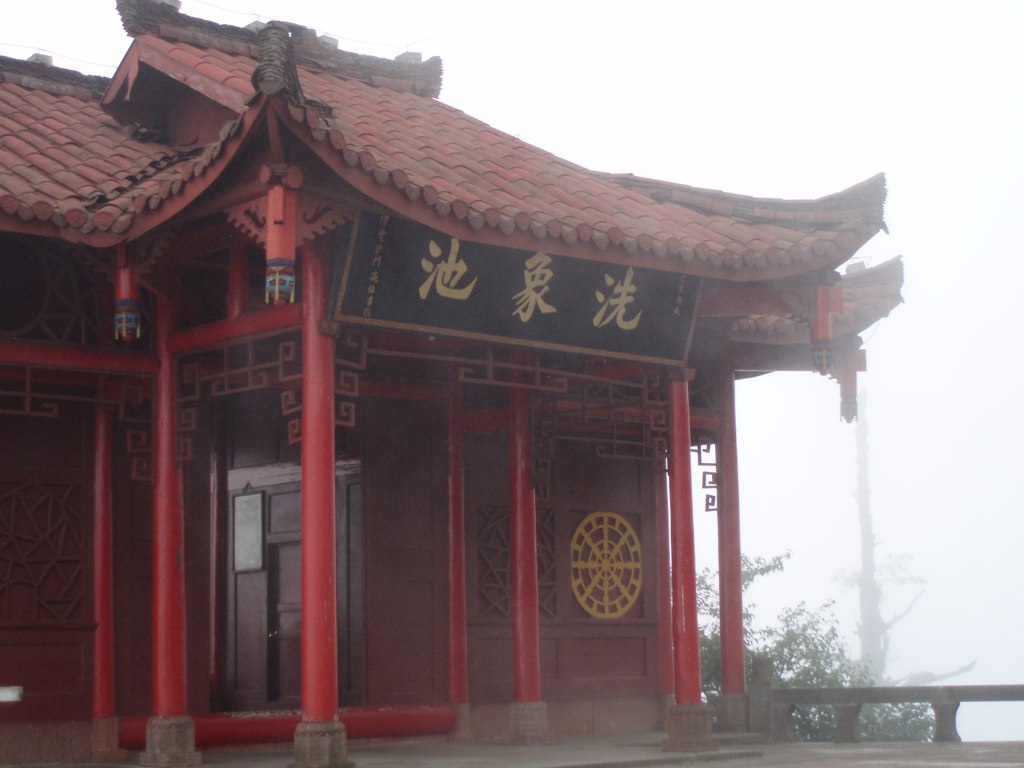Xixiang Chi on:
[Wikipedia]
[Google]
[Amazon]
 Xixiang Chi (), also known as Tianhua Chanyuan (), is one of the most important
Xixiang Chi (), also known as Tianhua Chanyuan (), is one of the most important
 Xixiang Chi (), also known as Tianhua Chanyuan (), is one of the most important
Xixiang Chi (), also known as Tianhua Chanyuan (), is one of the most important Buddhist temples
A Buddhist temple or Buddhist monastery is the place of worship for Buddhists, the followers of Buddhism. They include the structures called vihara, chaitya, stupa, wat and pagoda in different regions and languages. Temples in Buddhism represent ...
and monasteries
A monastery is a building or complex of buildings comprising the domestic quarters and workplaces of monastics, monks or nuns, whether living in communities or alone (hermits). A monastery generally includes a place reserved for prayer which ...
on Mount Emei
Mount Emei (; ), alternately Mount Omei, is a mountain in Sichuan Province, China, and is the highest of the Four Sacred Buddhist Mountains of China. Mount Emei sits at the western rim of the Sichuan Basin. The mountains west of it are know ...
in Emeishan City
Emeishan () is a county-level city in Sichuan province of China, province, China. It is administered by the prefecture-level city Leshan. Its population in 1990 stood at 396,445. It is named after Mount Emei, a famous mountain located within its a ...
, Sichuan
Sichuan (; zh, c=, labels=no, ; zh, p=Sìchuān; alternatively romanized as Szechuan or Szechwan; formerly also referred to as "West China" or "Western China" by Protestant missions) is a province in Southwest China occupying most of the ...
, China
China, officially the People's Republic of China (PRC), is a country in East Asia. It is the world's most populous country, with a population exceeding 1.4 billion, slightly ahead of India. China spans the equivalent of five time zones and ...
.
The temple is located more than 2,000 metres above sea level. The monastery was founded in the Ming dynasty
The Ming dynasty (), officially the Great Ming, was an Dynasties in Chinese history, imperial dynasty of China, ruling from 1368 to 1644 following the collapse of the Mongol Empire, Mongol-led Yuan dynasty. The Ming dynasty was the last ort ...
and was expanded during the reign of the Kangxi Emperor
The Kangxi Emperor (4 May 1654– 20 December 1722), also known by his temple name Emperor Shengzu of Qing, born Xuanye, was the third emperor of the Qing dynasty, and the second Qing emperor to rule over China proper, reigning from 1661 to 1 ...
in the Qing dynasty
The Qing dynasty ( ), officially the Great Qing,, was a Manchu-led imperial dynasty of China and the last orthodox dynasty in Chinese history. It emerged from the Later Jin dynasty founded by the Jianzhou Jurchens, a Tungusic-speak ...
. The name of the temple comes from a legend which says that the Bodhisattva
In Buddhism, a bodhisattva ( ; sa, 𑀩𑁄𑀥𑀺𑀲𑀢𑁆𑀢𑁆𑀯 (Brahmī), translit=bodhisattva, label=Sanskrit) or bodhisatva is a person who is on the path towards bodhi ('awakening') or Buddhahood.
In the Early Buddhist schools ...
Samantabhadra Samantabhadra (Lit. "All Good", or "Always Auspicious") may refer to:
* Samantabhadra (Bodhisattva), a bodhisattva in Mahayana Buddhism associated with practice and meditation
* ''Samantabhadra'' (Tibetan: ''Kuntu Zangpo''), the name of a Buddha, ...
once bathed his steed, a white elephant
A white elephant is a possession that its owner cannot dispose of, and whose cost, particularly that of maintenance, is out of proportion to its usefulness. In modern usage, it is a metaphor used to describe an object, construction project, sch ...
, in a pond near the temple. "Night Moon over the Elephant washing pond" ("Night Moon over the Elephant Washing Pool") is one of the ten sceneries of Mount Emei. When the moon is shining brightly at night and is reflected in the water, it creates an illusion where the viewer feels like they are in Heaven.
Important buildings in the temple are the Maitreya Hall, Main Hall, Guanyin Hall
The Hall of Guanyin or Guanyin Hall ( or ) is the most important annex halls in Chinese Buddhist temples and mainly for enshrining Guanyin (Avalokiteśvara). Guanyin, also called "Guanshiyin" (), "Guanshizizai" (), "Guanzizai" (), etc., is the at ...
, "Tripitaka Pavilion" (library) and guest cottage.
The Temple is also an UNESCO Heritage Site
A World Heritage Site is a landmark or area with legal protection by an international convention administered by the United Nations Educational, Scientific and Cultural Organization (UNESCO). World Heritage Sites are designated by UNESCO for h ...
.
Monument
The temple stands since 2006 on the list of monuments of the People's Republic of China (1-133). The temple is also on the list of monuments ofSichuan
Sichuan (; zh, c=, labels=no, ; zh, p=Sìchuān; alternatively romanized as Szechuan or Szechwan; formerly also referred to as "West China" or "Western China" by Protestant missions) is a province in Southwest China occupying most of the ...
Province.
References
{{coord, 29.5537, N, 103.3438, E, format=dms, source:wikidata, display=title Buddhist temples in Sichuan